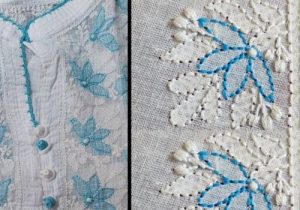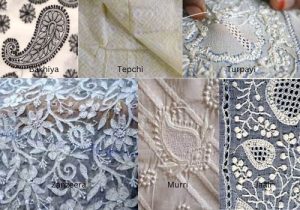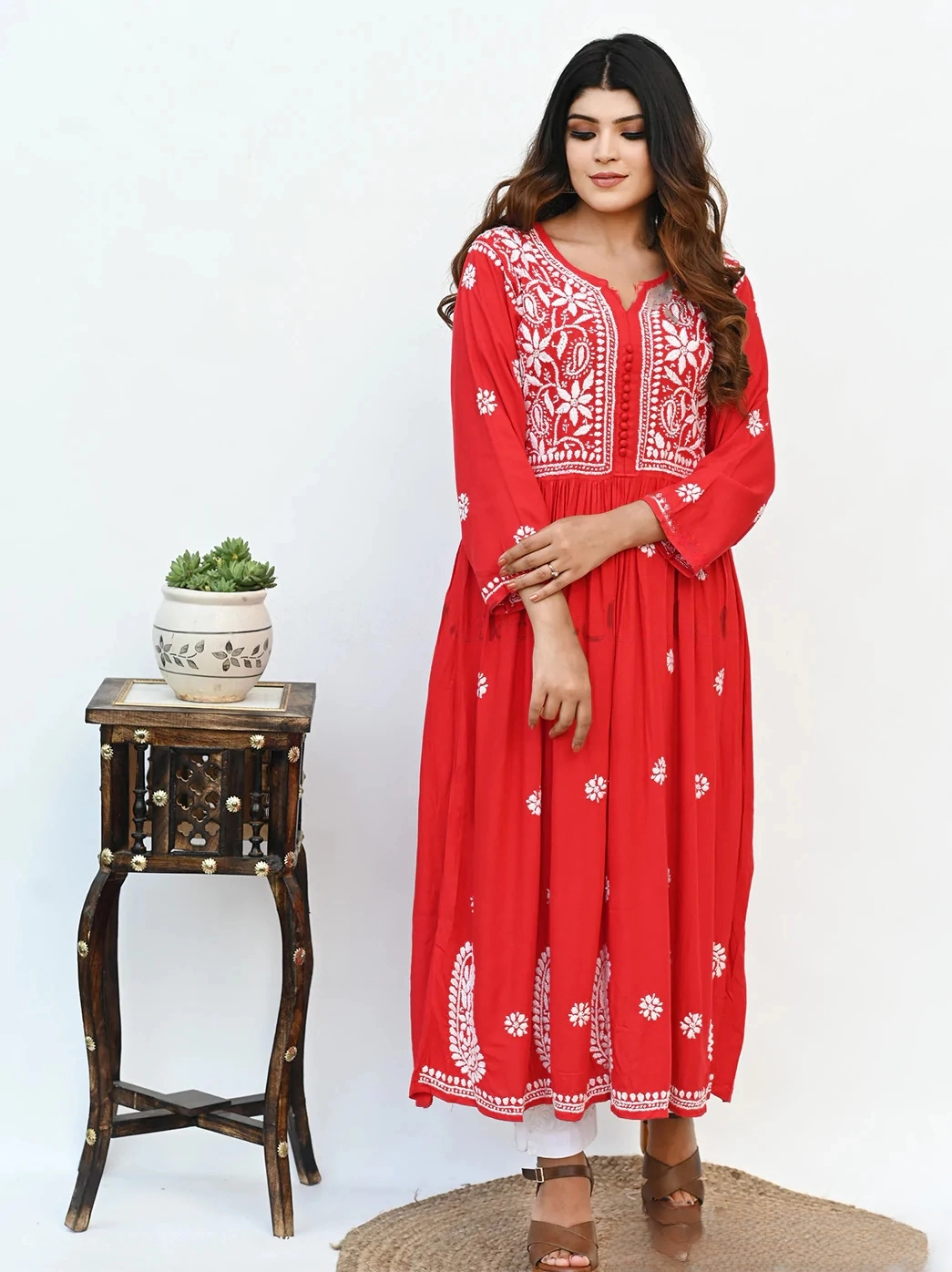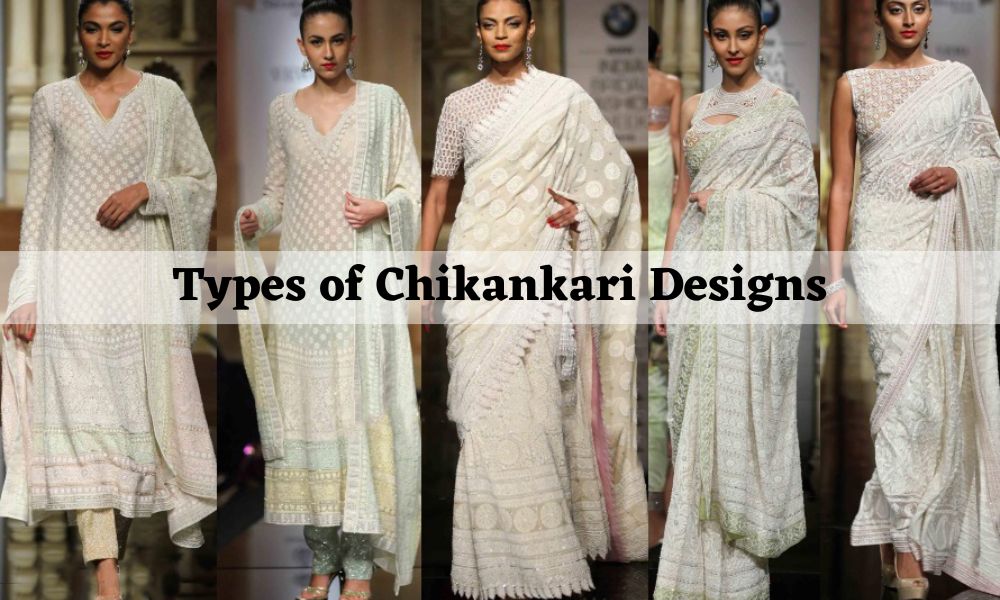While coming to the term Chikankari, it’s remarkable to see how hand-crafted work can be so beautifully done on a light fabric. The embroidery needle crafted on a fabric material requires a lot of work experience.
To bring out the best, artisans delicately apply different techniques, details and precision in handling the needlework. In general, this art form cannot be replaced anywhere as it’s solely in its city and the culture it exhibits.
What does Chikankari look like?
It’s obvious that anybody who’s into clothing & fashion must know what Chikankari looks like. It’s a beautiful embroidery pattern design that’s stitch on fabric using needlecraft work.
The traditional work of artisans using a needle and thread to draw beautiful patterns is exceptional. They generally use white threat embroidery and traditional designs such as – flowers, tribal designs and similar patterns.
Check Also: White Chikankari: The Traditional Approach
Types of Chikankari Stitches

The patterns and designs that create the effect of Chikankari stitches are well accustomed to the type of stitches that are being used. Likewise, they may vary depending on the thickness of the thread and how delicate the work needs to be.
When an artisan of Chikankari works with needlecraft work, they often create designs using the space in between the blue ink. They can add several other designs and use beads like embellishments to make the attire look more attractive.
There are about 32 types of Chikankari stitches, and they primarily fall into six main categories. They are as follows –

- Tepchi – It is the prime or more focused type of Chikankari stitch that’s mostly common on kurtas, dupattas and sarees. The design of this form of Chikankari includes long-running stitch work with six strands on either side. Likewise, as it goes along in a full work using the stitch and needle. Hence, the fabric that’s to be in use should be thin and lightweight.
- Bakhiya – There are many patterns of bakhiya Chikankari design that an artisan may use on the fabric. It is that form of Chikan art that’s usually on the wrong side of the fabric. Another similar form stitch that’s common to Bakhiya is Khatau, but it’s a little finer in design.
- Turpai – The term “turpai” is highly popular in the Chikankari form of needlecraft. Its other significant name is darazdari, where the artisan uses a thin thread to do the work. Likewise, there are many varieties of this form of art, such as – kamal darz, muchii, kohidarz, etc.
- Zanzeera – The name of the stitch originally relates to the small chain work that’s professionally done using thread and needle on one side of the fabric. The stitches need to be extremely fine that outline the shape of the leaf or petal.
- Murri – These stitches usually fill the centre of a flower via embroidery. Though it’s highly popular with the latest designs, artisans are working less on this form.
- Jali – It is that form of Chikankari that ensures that the front and back stitches look the same. Furthermore, it’s really tough and also the most elegant form of the Chikankari pattern.
The other popular designs and types of Chikankari work includes – hool, rafet, banarsi, khatau, phanda, pechni, ghaspatti, hathkandi, dhania-patti, meharki, keel kangan, etc.
Variations in Chikankari Embroidery
We all know that a Chikankari design and Chikankari dresses look so attractive and elegant. At the same time, it’s quite tough to create such combinations that are different yet technically beautiful. Furthermore, the artisans are able to provide such decent work as they –
- Work on the inner side of the fabric that’s visible with elegance on the front
- May work with different variations of motifs in a single piece of fabric
- Use different quality beads and embellishments on the fabric
- Can apply the technique of interweaving to create mesh designs
- It may include different patterns to create something new
In addition, note that every piece of Chikankari work includes a combination of different techniques. Hence, the price range of every product may vary depending on the raw material in use. Likewise, high-quality fabric such as silk with the best quality thread work will mark a higher range.
Related Articles:
https://aabroochikankari.com/hand-embroidery-vs-machine-embroidery/
https://aabroochikankari.com/embroidery-chikankari-needle-work/
https://aabroochikankari.com/types-of-chikankari/

